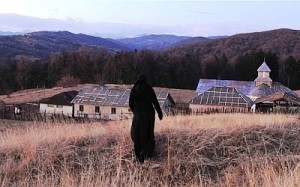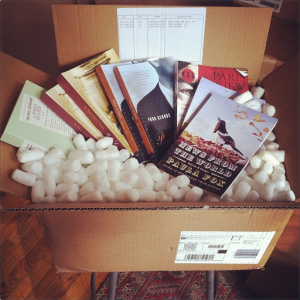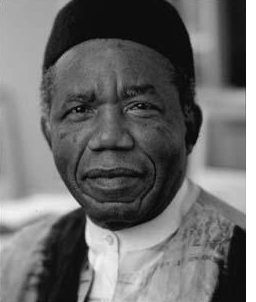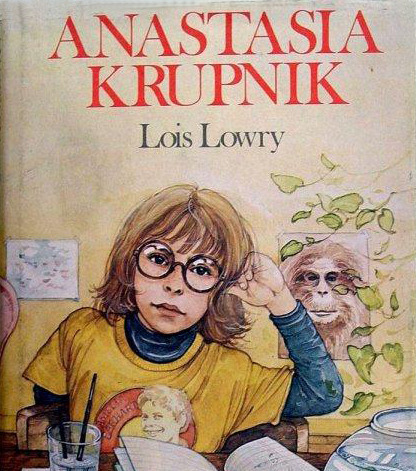The Paris Review's Blog, page 837
March 22, 2013
What We’re Loving: Romanian Cinema, African Art
 For three years—ever since it came out—people have been recommending this unusual family history, by a potter named Edmund de Waal, all about the fate of a collection of Japanese miniatures whose owners migrated from Odessa to Paris to Vienna. And for three years I took their word for it. Because really, a book about somebody’s heirlooms? Then one night last week, all keyed up from three hours of House of Cards, I pulled down The Hare with Amber Eyes (a gift copy), hoping it would put me to sleep. Fat chance. I’d expected charm, but here was astringent wit, quiet erudition, just the necessary amount of first person, and an unromantic, sharply observed, very poignant account of a Jewish family’s rise and fall between the Belle Epoque and World War II. From House to Hare: from the frying pan into the fire. —Lorin Stein
For three years—ever since it came out—people have been recommending this unusual family history, by a potter named Edmund de Waal, all about the fate of a collection of Japanese miniatures whose owners migrated from Odessa to Paris to Vienna. And for three years I took their word for it. Because really, a book about somebody’s heirlooms? Then one night last week, all keyed up from three hours of House of Cards, I pulled down The Hare with Amber Eyes (a gift copy), hoping it would put me to sleep. Fat chance. I’d expected charm, but here was astringent wit, quiet erudition, just the necessary amount of first person, and an unromantic, sharply observed, very poignant account of a Jewish family’s rise and fall between the Belle Epoque and World War II. From House to Hare: from the frying pan into the fire. —Lorin Stein
I debated recommending the Romanian film Beyond the Hills, not because it isn’t terrific—a fact that will come as no surprise to anyone who saw director Cristian Mungiu’s first feature, 4 Months, 3 Weeks and 2 Days—but rather because so many critics have done it more justice than I ever could, and because I found watching it so harrowing an experience. Loosely based on a real-life 2005 case of an exorcism in a Moldavian monastery, the film is a horror movie, a romance, a character study, and, most of all, the kind of true tragedy we normally don’t see, or feel. It’s long and slow paced, but utterly riveting; I came out of the theater completely shell-shocked. I don’t think I could sit through it again, but you’ll be making a mistake if you don’t see it while you can. —Sadie Stein
Chimurenga is a difficult magazine to define: a collection of African art, comics, journalism, and photography, every edition looks entirely different (to give you an idea of its inscrutability, the October 2011 edition was set in May 2008). The founder is also a DJ who runs a jazz bar, and sometimes hosts twenty-four-hour secret jam sessions. There are no invites and no posters; the Chimurenga motto is “who no know go know.” Their latest venture is Chimurenga Chronic, a “pan-African quarterly print gazette” that deals in everything from art and faith to dirty deals and cricket stars. (To get a sense of its sweep, try “The Last Words of Fela Anikulapo Kuti” and the interactive comic strip.) Print availability is another matter: Chronic was due out on the streets “now-now,” which in South Africa translates roughly to “it’ll be out when it’s out, which will probably be soon, we can’t say exactly when, but we know you want to keep your eyes peeled for it. And it might already be out, so look sharp.” —Olivia Walton Read More »
Chinua Achebe, 1930–2013
“We live in a society that is in transition from oral to written. There are oral stories that are still there, not exactly in their full magnificence, but still strong in their differentness from written stories. Each mode has its ways and methods and rules. They can reinforce each other; this is the advantage my generation has—we can bring to the written story something of that energy of the story told by word of mouth. This is really one of the contributions our literature has made to contemporary literature.” —Chinua Achebe, the Art of Fiction No. 139
Chinua Achebe Dies, and Other News
Chinua Achebe has died at eighty-two.
The Guardian rereleases a stirring interview with the Nigerian literary giant.
(Yes, the words “things have fallen apart” have been, appropriately, invoked.)
An Oxford University librarian has been fired after students staged a textbook Harlem shake on her unwitting watch.
It’s been a while since we gawked at literary tattoos. If you feel this lack keenly, this one’s for you.
March 21, 2013
Countdown to the Revel
 Here at 62 White Street, preparations for our Spring Revel are in full swing! Our office is brimming with loot for our guests: limited-edition Paris Review tote bags; archival copies of the magazine; our recent anthology of short stories, Object Lessons; loads of books by Paula Fox, the Revel’s honoree and the recipient of this year’s Hadada Award; and surprises yet to be revealed.
Here at 62 White Street, preparations for our Spring Revel are in full swing! Our office is brimming with loot for our guests: limited-edition Paris Review tote bags; archival copies of the magazine; our recent anthology of short stories, Object Lessons; loads of books by Paula Fox, the Revel’s honoree and the recipient of this year’s Hadada Award; and surprises yet to be revealed.
Variously described as “the best party in town” and “prom for New York intellectuals,” the Spring Revel is legendary for a reason. Tuesday, April 9, join Paris Review readers, supporters, and writers at Cipriani 42nd Street for an always unforgettable evening of cocktails, dinner, and revelry. Writer hosts include Hilton Als, Michael Cunningham, James Fenton, Zoë Heller, Lewis Lapham, Katie Roiphe, Leanne Shapton, Wallace Shawn, Zadie Smith, Gay Talese, and many more.
Get your tickets here!
Half-Life
“Sorry, wasn’t there a cabaret here?” a British woman asked the waiter. He was laying a napkin on the table and put a glass of white wine on top of it. For a second, I thought the woman was talking to me.
“Oh yes,” the waiter said, “this part of the bar used to be the Oak Room. They only put that wall up a couple of months ago.” He tapped a panel between her table and mine, then put an identical glass of wine in front of me.
The Algonquin Hotel’s Blue Bar lived up to its name: neon tubes snaked clear around the narrow room, reflecting their blue glare on its oak panels and plastic banquettes. Hirschfeld prints covered the walls and Sinatra crooned from a speaker in the ceiling. I wanted to answer the woman, but found myself far away from her.
“Ladies and gentlemen,” a baritone voice announced, “The Oak Room is proud to present … Steve Ross!”
The crowd applauded. Candles flickered inside their glass holders. A curtain at one end of the room parted, and Steve appeared in Noël Coward’s emerald smoking jacket. He wove through the tables, making his way to the grand piano. The crowd hushed, and he began to play Porter, Gershwin, and the saloon songs he knew I liked.
“If it isn’t the jeunesse dorée!” he beamed at me after the show, shaking hands with people as they filed out of the Oak Room.
“Did you know,” he told me when most of them were gone, “that the first Algonquin Round Table was right over over there?” He pointed to a corner of the Oak Room, just on the other side of the door from where we were standing. Waiters were clearing the tables; the baritone in the light booth was pulling on his coat. Alexander Woolcott might as well have been lingering over lunch. Read More »
Happy March 21
Our Books Lack Feelings, and Other News
Over at Ploughshares , an interview with book artist Melissa Jay Craig.
Putting his money where his mouth is, so to speak, writer Tom Bissell has written a video game, Gears of War: Judgment , the fourth in a military sci-fi series. This trend has endless possibilities. (Cue Joyce Carol Oates for Xbox 360.)
An algorithm finds that the emotional content of books is on the decline. (Although there’s probably more sex.)
Conversely! “Morn shows that he was not immune to the forces that had so dramatically acted upon his father, though his own political convictions would thrive within the rococo folds of his language.” Two new books allow us to see a new, less detached side of Nabokov.
Horror writer James Herbert has died, at sixty-nine.
March 20, 2013
Diego, Frida, and Me
Molly’s Factory
When a woman artist looks for her forebears, she sees a void.
There are, needless to say, great female artists. There’s Tamara de Lempicka, queen of art deco. There’s Artemisia Gentileschi, forever in paintings, cutting off her rapist’s head. There’s love-ravished Camille Claudel, making the hands of her lover Rodin’s sculptures before being institutionalized for forty years. There are Mary Cassatt’s paintings of children. But it can’t be denied: the canon of Western woman’s art is nothing compared to the canon of Western woman’s writing.
Noted Audre Lorde, “Of all the art forms, poetry is the most economical. It is the one which is the most secret, which requires the least physical labor, the least material, and the one which can be done between shifts, in the hospital pantry, on the subway, and on scraps of surplus paper.” While a writer may require only a room of one’s own, an artist needs years of training, muses, a studio, canvas, paints, patrons, and, fundamentally, a world that lets her be grubby and feral and alone.
Growing up, the women in art history who inspired me were primarily models: Victorine Muerent. La Goulue. Far from pampered, indolent odalisques, these are sexy, tough, working-class women, often with backgrounds in the sex trade. Notable contrasts to the genteel girls who studied flower painting along with piano and embroidery, my archetypes were flamboyant, glamorous self-creations, unabashedly employing themselves as their own raw materials in a world that would give them nothing else. I too worked as an artist’s model. For an artist, the job is a paradox: you’re clay for someone else’s creation while longing to make your own. Read More »
Happy Birthday, Lois Lowry
Southern Holiday, Part 3
The Pinehurst Hotel, ca. 1940: the possible model for Tennessee Williams’s Hotel Flamingo, where Blanche lived after she lost Belle Reve and before she moved to New Orleans.
Mississippi and New Orleans were on my horizon. Light in August and Streetcar Named Desire were on my mind. That is to say, Gene Smith was back in the mix. The morality and narrative techniques of Faulkner and Williams influenced his photography: he taped the text of Faulkner’s Nobel speech to the wall above his desk in his dilapidated Sixth Avenue loft and considered Williams’s oft-maligned, rarely seen Camino Real a pinnacle of American theater. Plus, he once made a portrait of Williams in a pool, swimming the backstroke naked with an apparent erection (try that aquatic feat, literary lads). The fog of Smith had returned to my Southern holiday road trip.
After an overnight stop in Mobile, Alabama, my destination was Laurel, Mississippi, south of Jackson and north of New Orleans. Laurel was the fictional hometown of Streetcar’s Blanche DuBois and her sister, Stella, and the site of their family estate, Belle Reve. It was Blanche’s loss of Belle Reve after the war that sent her to steamy, bedraggled New Orleans to stay with Stella and her ape-husband Stanley Kowalski. The rest is theater history. I wanted to spend some time in Laurel and then follow Blanche’s path into New Orleans. Read More »
The Paris Review's Blog
- The Paris Review's profile
- 305 followers











